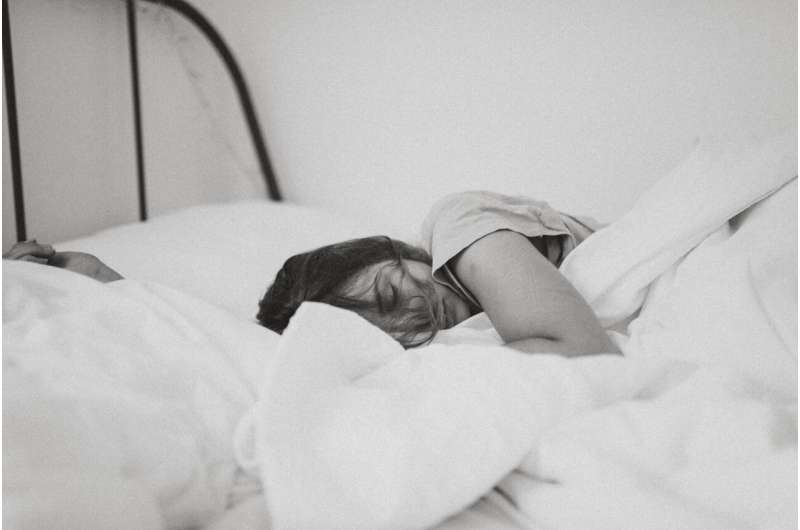This article has been reviewed according to Science X's editorial process and policies. Editors have highlighted the following attributes while ensuring the content's credibility:
fact-checked
trusted source
proofread
Q&A: Behavior problems might be partly attributed to sleep cycles in adolescents

Mental health issues affect a significant percentage of children and adolescents worldwide, with behavior problems being among the most prevalent. Behavior problems in adolescence can lead to behavior disorders, contributing to adverse health outcomes, disability, diminished quality of life, and even premature mortality.
University of Michigan graduate student and lead author Mia Qihan Zhu and Eduardo Villamor, professor of epidemiology at the U-M School of Public Health, shed light on the connection between chronotype and behavior problems. They discuss a study conducted in Colombia that examined an individual's sleep-wake cycle and its relationship to behavioral issues. The research is published in the journal Chronobiology International.
What does social jet lag and chronotype mean? How do they differ from one another?
Chronotype is reflected in the natural bedtime and wake time habits of a person. For example, someone who prefers going to bed late and waking up late has a later chronotype ("night owl") while someone who prefers going to bed early and waking up early has an early chronotype ("morning lark"). Social jet lag is the mismatch between natural chronotype and sleep-wake times imposed by social obligations.
Can you explain the significance of the findings and how they contribute to our understanding of behavior problems in adolescence?
We found that both later chronotype ("eveningness") and social jet lag were related to increased behavior problems. Even though the relation between chronotype and behavior was not explained by social jet lag, it would be of interest to find out whether interventions on either eveningness or social jet lag could have an impact on the development of behavior problems.
What were the key behavior problems you focused on in the study, and why did you choose those particular aspects?
Behavior problems in adolescence are conventionally categorized into two major groups, externalizing behaviors, when kids tend to behave aggressively or break rules, and internalizing behaviors which involve more depressive, anxious or withdrawn demeanors. Other important categories are thought, attention and social problems. Some of these categories predict the development of specific disorders later in life. Studying behavior problems in these categories is also helpful to allow for comparisons between studies conducted in different populations.
How might understanding social jet lag contribute to better sleep patterns and behavior regulation in adolescents?
There are two elements to social jet lag; one related to a person's natural sleep patterns and another to the person's actual sleep patterns imposed by social obligations. Understanding each component could help identify ways to ameliorate their mismatch and their consequences.
Were there any notable differences in behavior problems between male and female adolescents in relation to their chronotype?
The associations between chronotype and behavior problems were stronger in boys compared with girls for one type of internalizing behavior (somatic complaints) and for social problems. However, for most behavior problems there were no major differences between male and female adolescents.
Are there any potential implications or applications of this research in terms of interventions or support for adolescents with behavior problems?
Parents and health providers should increase their awareness of sleep issues in children and adolescents since they could be related to behavior problems. Because later chronotype has also been related to other health problems, including chronic disease such as diabetes and heart disease, evaluating the impact of interventions on children and adolescents to promote early bedtimes could be an important research priority.
Could the findings be applicable to adolescents in other countries or cultural contexts?
These results might be applicable to countries with similar patterns of sleep and behavior, possibly other countries in Latin America.
More information: Mia Q. Zhu et al, Is the association of chronotype with adolescent behavior problems mediated through social jetlag?, Chronobiology International (2023). DOI: 10.1080/07420528.2023.2216790



















